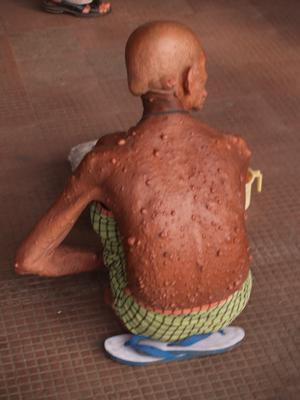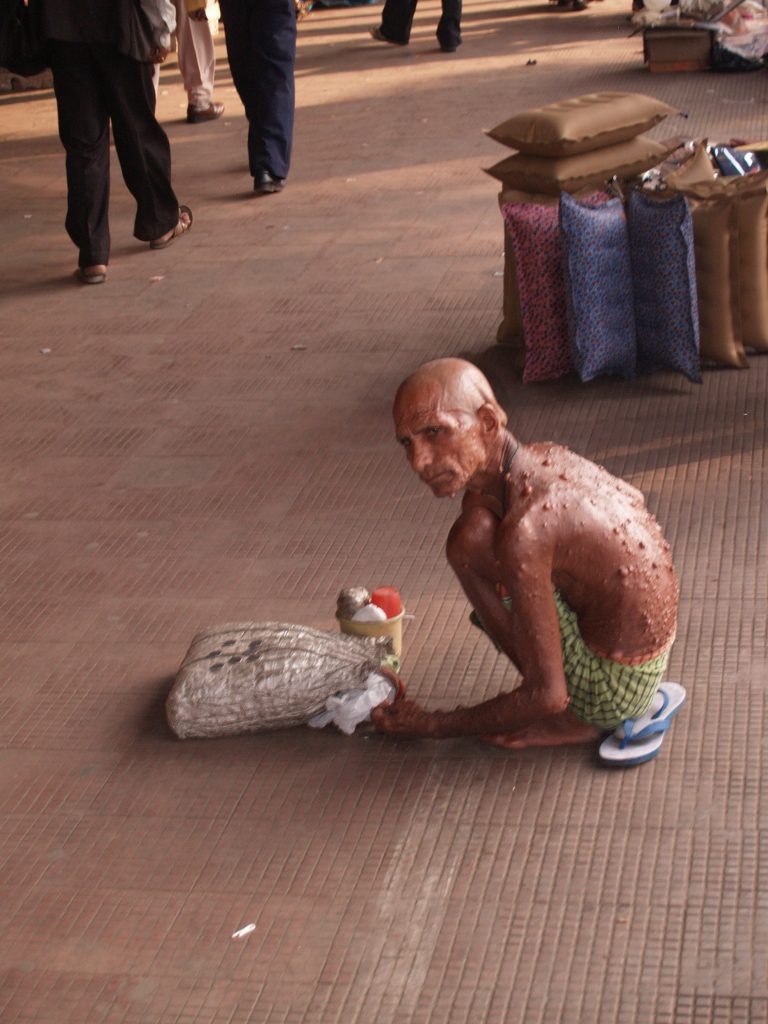COVID-19 Reality Check
April 2020

Here’s a mental exercise:
Assume that this photo above represents a newly discovered virus somewhere in China. After first being observed and ignored, and following a suppression of the news about the virus’s discovery lasting many weeks…Suppose that the Chinese city recognizes a dangerous epidemic in the making and seeks to quarantine itself. The tumors appearing all over the body incite feelings of revulsion and fear of the virus. This fear is compounded when it is revealed that of the thousands of patients infected by the virus, a significant number die within days.
The reality today is very similar to the description above, but without the ugly tumors afflicting the victim in the photo. COVID-19 unfortunately is relatively invisible. Its victims don’t look any different, until they can’t breath and have to be attached to a respirator. Would the willingness by everyone to comply with societal quarantine practices be higher if the symptoms of the current virus were highly visible, as with the man in the photo?
What is the current state of the pandemic?
The purpose of this essay is to discuss the long term effects of the COVID-19 pandemic, how we should prepare to cope with it, and what questions remain to be answered. The first questions are: How much longer will this last? How much worse is this going to get? How many will ultimately die?
If you’ve been following the news, then you’ve heard that the number of deaths in the US is practically doubling every week. As of April twenty-sixth, well over fifty thousand Americans have died, which is one quarter of the world’s current total cases. Americans comprise only six percent of the world’s population.
Some cities and more rural states hope that they have avoided the worst of the initial wave of infections. Among those who are most informed about the virus, there is the fear that reopening closed businesses and restarting the economy too soon might provoke a second wave of infections. If that happens, we will find ourselves living with the pandemic not only longer, but many more will die. Eventually, the number of American deaths might number in the hundreds of thousands.
Sheltering-in-place
As I complete my first month quarantining-at-home, it feels surreal. I find myself watching too many hours of news on television as well as listening to NPR every day. Thus, I’m constantly reminded of the progression of the pandemic. On Facebook, an alumna from my high school in Columbus, Georgia, stated, “I think if we shut down the media, life would get much better.” I answered, “I wish it were that simple.”
Objectively speaking, the progression of the pandemic can observed by checking the new daily infection and death numbers which are easily available online. Each fatality represents an individual, with family and friends who are affected by the misery and death caused by the corona virus. From a societal perspective, we are seriously weakened as a country by the deaths, losses, and expenses caused by the virus.
Is there something we can do as a nation to ease our national crisis (which is mirrored internationally)? Certainly…but so far there is no leadership from Washington, nor sufficient public pressure from the bottom. Who will pay the price or make the changes necessary to avoid thousands of preventable future deaths?
Magic Bullet Solutions?
An effective vaccine will probably not be available for at least a year or two. Absent a vaccine and besides sheltering-in-place, i.e. self-quarantining, there are only two other strategies guaranteed to make the pandemic more manageable. They are universal testing and contact tracing.
At this time the US does not have enough test kits, supplies, nor the infrastructure necessary implement universal testing or contact tracing. And I am not certain the will is there. Regarding contact tracing, there is resistance to the type of cell phone tracking that has been used successfully in China, South Korea, and Japan. As history has shown with other pandemics, in the US, there is a collective resistance to be surveilled or being forced to take a vaccine.
It is unknown currently how many thousands of symptom-free people are infected and spreading the virus. Comprehensive testing of specific groups has revealed that as many as fifty percent of people testing positive for the virus exhibit no symptoms. The unfortunate reality is that we do not know who has been infected and is a carrier, spreading the virus to whomever they are in close contact with.
What about people who don’t accept the danger?
Encouraged by the rhetoric of President Trump, loud demonstrations are regularly occurring in state capitals around the country, by angry demonstrators demanding the cancellation all quarantine measures in order to reopen the economy. President Trump has supported these anti-state-government demonstrations with the exhortation to his followers to “liberate” those states led by Democratic governors.
These political demonstrations are symbolic, since many states have already set dates soon to allow restaurants, movie theaters, and malls to reopen. If these openings result in a second wave of infections, there will be a deep and potentially dangerous conflict between the followers of medical science versus the proponents of unrestricted economic revival.
Many questions have yet to be answered
How long before we can go back to our lives as before? Will life ever again be like it was before?
What conditions will we change about our work routines and our daily commutes? How many of us might prefer to work from home as opposed to commuting to the office every day?
How many deaths are we willing to accept as a unfortunate side-effect of opening up all businesses as before? How will we cope with potential second and third waves of the pandemic?
Will the US and its allies aid poor countries who lack the resources to protect and treat their citizens? Will the US renew support for the World Health Organization (WHO)?
Is access to healthcare a human right or dependent on one’s economic status?
How long before we are again free to attend large sporting and cultural events? Will we trust traveling internationally? Will we bail out the cruise industry?
Will this health crisis result in sufficient public support to institute “Medicare for All” or some similar universal access healthcare system?
How do we save ourselves and our country?
We can’t count on the government, either federal or state, to protect us from this pandemic. I do not trust the Trump administration to undertake the necessary initiatives to support quarantining, testing, or contact tracking. We cannot solve this crisis alone. Beyond personal, family, professional, and community connections, it will be up to the coordinated actions of all Americans to determine how long it will take to overcome the hold that COVID-19 has on every aspect of our lives. We cannot be truly secure until COVID-19 is controlled around the world.
At the same time, this crisis made obvious the ways in which our current healthcare system and the accompanying socioeconomic inequities play out in deadly fashion. We have an opportunity as a society to create a new healthcare system that provides universal care at a cost much lower than what we pay at present, if we elect to make it happen.
If not now, when? If not now, will the most expensive healthcare system in the world with its systemic problems that endangers caregivers in the trenches hold us hostage for another century? If we do not embrace the necessary changes now, what does this tell us about our nation?
We must join together in our communities, cities, states, and as a nation to overcome this worldwide coronavirus pandemic. We are losing too many lives due to failures in our healthcare delivery system along with the clear health and economic inequities, that we owe ourselves and those who follow us to use this crisis as the precipitating circumstance to reform our healthcare system.

I took the photos of this Indian beggar while on a music tour in Calcutta in 2007. I’ve never shown the photos to an expert/doctor for the diagnosis of this malady. I gave this poor man a baksheesh (gift=some money).
For a detailed description of the challenge COVID-19 poses to India's largest slum: https://www.deccanherald.com/national/west/covid-19-in-dharavi-is-mumbais-worst-nightmare-820423.html
0 Comments on COVID-19 Reality Check
Join the Conversation